Hanko (はんこ or 判子) or Japanese Seals (Personal Name Stamps) are products of a centuries-old Japanese tradition that is at the same time an essential part of everyday modern life in Japan. They make priceless mementos or gifts imbued with rare historical and cultural significance.
Many of the methods used for handmaking seals still derive closely from those used by the first sealmakers in ancient Mesopotamia. While mechanization and modern tools have improved the speed and reduced the cost of producing ordinary stamps, the best quality hanko still require traditional methods such as deep cutting to ensure durability, a clear and consistent imprint, and the ability to make complex, artistic, and unique designs. Ours is one of only two shops remaining in Kyoto still practicing these techniques.
Tanaka-Bunsyoudou was founded in this location in 1860. For over 150 years our family has been practicing age-old methods of hand-carving and designing seals, and our shop was recently designated as an official "Kyo-no Shinise" (Kyoto Historical / Longstanding Establishment).
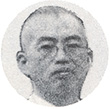
Kichitaro Tanaka, the second generation seal master of our lineage, became widely renowned as artisan and teacher, and many shops in Kyoto derive from his former students.
He is also responsible for a special feature of our hanko, a special font that incorporates "shichusuime" (四柱推命), or Four Pillar astrology, into its design.
Our current (5th generation) seal master, Daisei Tanaka, has garnered the title of "Future Grandmaster of the Art of Hanko" and was recently featured in a 2018 exhibition of Future Grandmasters of Japanese Crafts. Despite changing times, he strives to expand his artistry and uphold this precious historical, cultural, and family heritage.
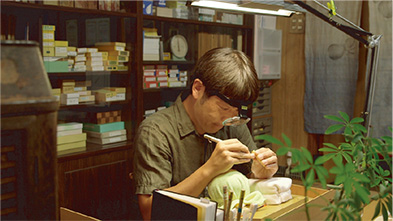
The use of hanko as personal symbols on stones, shells, clay, and wood is known to have begun in Mesopotamia around 5000 B.C., eventually making its way to Japan through Europe and China.
A golden hanko given by Chinese Emperor Guangwu in 57 A.D to the ruler of Fukuoka, in recognition of his authority in China, is the oldest hanko extant in Japan.
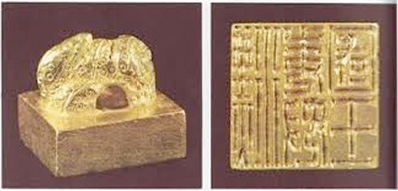
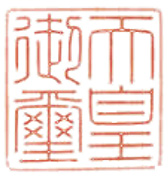
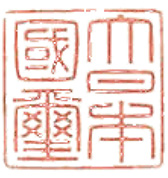
In 1874, Kyoto-based "master-hand of the seal" Abei Rekido (安部井 櫟堂, 1805-1883) was commissioned to remake in gold the Emperor's official seal (Privy Seal), which appears on the Japanese Constitution, and the goverment's official seal (Great Seal of Japan), both of which continue to be used for various state documents. The special cinnabar ink commonly used in japan is known to resist fading over thousands of years, even when burned.
To this day, they are a integral part of daily life in Japan, still obligatory for important legal and commercial transactions, and ubiquitously the norm for a multitude of purposes. They are used, almost exclusively, in lieu of signatures or initials.